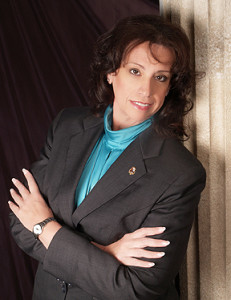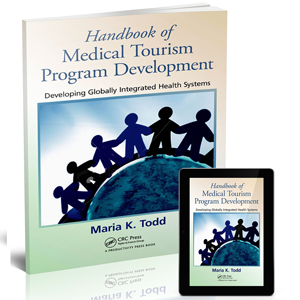[vc_row][vc_column width=”2/3″][vc_column_text]
Today’s Musing
Success and profits flow to health tourism organizations with uniquely valuable market propositions – regardless of their destination.
This article was selected by the editor of International Medical Travel Journal and republished on July 15, 2014
I am writing this as I am stranded in New York at JFK airport for two days, waiting to return home from client meetings here in New York and in Charleston, SC. Hurricane Arthur is headed towards the east coast of the USA. Our thoughts are with our friends and families in the path of the storm.
If I had a nickel for every health tourism executive who blamed his or her organization’s inability to grow their medical tourism program on a weakness in the market, I’d be richer than Croesus.
At any given time, more than half of all medical tourism start ups are failing to thrive. And it is only natural to blame something external for one’s problems. The problem with this thinking is that a weak market is simply no excuse. There are always some organizations in every sector that find a formula for growth and success in industries that aren’t doing anything special. Actually, health tourism isn’t all that special if you think about it. It is a service industry created from excess capacity at hospitals, clinics, ambulatory surgical facilities, spas and resorts, rehabilitation centers, and hotel accommodation suppliers and other cluster actors. If you are an executive of a medical tourism organization, it is your job to ignore the excuses and figure out how to achieve success and profitability. If you can’t do that, you should find help to guide you and give you options or go do something else.
Despite what others might want you to believe, health tourism on a global scale is a low-growth industry by comparison to other sectors and even other industries in healthcare, per se. There are many market entrants and hopefuls. But hope isn’t what brings success.
Winners in low growth industries two two things better than others.
They grow by taking market share from competitors and they take it profitably, often without reducing prices. By my professional opinion, since accommodating a traveling patient requires additional logistics and planning beyond what is necessary for local patients who come from home and return home immediately after discharge from the health facility, the price should actually be a bit higher to cover the activity-based costs, which are often significant. When health tourism hospitals and clusters align these two actions successfully, they create their own growth cycle, one that is independent of the industry cycle. As a result, market disequilibrium occurs, allowing those who created it to become dominant in their sector. Healthcare and health tourism are no different.
Equilibrium, on the other hand, is the state that exists when a set of health tourism providers or clusters in different destinations with essentially similar offers compete within a market and get similar returns and amass market share within a few points of one another. When the health tourism market is in equilibrium, competing players battle for often minuscule market share. However well these health tourism companies operational or quality capabilities are well-developed or however talented their executives, no one really studies them to learn how to achieve off-the-charts business success.
Disequilibrium is much more interesting. Companies that create these conditions rarely follow templates. Instead they find creative ways to leverage a particular competitive advantage to tilt the market in their direction and keep it that way. They become sources of envy among competitors because the offer proof that true advantage an be achieved and sustained when leadership is exceptionally shrewd – no matter the state of the overall industry.
How to build disequilibrium in health tourism
- What do you do that’s unique, that customers value?
- Can your competitors match this capability in any way?
- Are there any coming technological or regulatory shifts that could transform your market, and if so, do you have a well-thought-out plan to address them?
A health tourism provider or cluster generally has two levers available to them
I’d love to help you with your project this year.
About Mercury Advisory Group
Mercury Advisory Group is a full-service, global consultancy with an exclusive focus on healthcare.
We make it easier for providers to be in the business of healthcare by helping hospitals, clinics, ACO’s, pharmaceutical and device manufacturers companies and concierge physicians create, manage, and strengthen, measure their brands and their value.
Whether you’re launching a new product or just went through a merger, we have the expertise and tools to help you maximize your brand’s impact success and profitability. We offer a full spectrum of operational and startup guidance and services for healthcare providers, manufacturers and service partners. Since 1993, Mercury Advisory Group has developed, organized and launched more than 200 IPAs, PHOs, MSOs, ACOs and other integrated health systems in the USA and abroad. In medical tourism, we designed and operated the world’s first and only Globally Integrated Health Delivery System® and were granted a trademark registration for this new term of art in 2010 from the US Patent and Trademark Office in Washington, DC.
Stay up to date and read the latest published articles by subscribing to my free newsletter, Medical Tourism Insights today! SUBSCRIBE
[/vc_column_text][/vc_column][vc_column width=”1/3″][vc_cta_button2 h2=”Would you like to receive my free Medical Tourism Insights newsletter?” style=”rounded” txt_align=”left” title=”Subscribe” btn_style=”rounded” color=”juicy_pink” size=”lg” position=”bottom” accent_color=”#dd8902″ link=”url:http%3A%2F%2Fmercuryadvisorygroup.us5.list-manage1.com%2Fsubscribe%3Fu%3Da031add509efdb2bfc5430ddf%26id%3D908cbe1582|title:subscribe|”]Published each weekday.
View past issues.[/vc_cta_button2][vc_column_text]
 I work with many governments, hospitals, clinics, hotel associations and tourism boards all over the world to help them prepare their destinations and healthcare providers for medical tourism market entry. My clients are often clusters of medical tourism suppliers organized by private sector investors or government agencies. Many of these projects include drafting framework medical tourism laws, model operating standards, and identify target markets. Projects usually are reliant on donor funds or private equity investment to fund their projects. But I also work with individual hospitals, clinics, hotels and resorts and attractions on short term small scale assignments.
I work with many governments, hospitals, clinics, hotel associations and tourism boards all over the world to help them prepare their destinations and healthcare providers for medical tourism market entry. My clients are often clusters of medical tourism suppliers organized by private sector investors or government agencies. Many of these projects include drafting framework medical tourism laws, model operating standards, and identify target markets. Projects usually are reliant on donor funds or private equity investment to fund their projects. But I also work with individual hospitals, clinics, hotels and resorts and attractions on short term small scale assignments.
My clients benefit from more than 30 years in medical tourism planning, insurance and employer contracting, accreditation preparation, and marketing strategy. I bring them a unique blend of training and experience that includes health insurance reimbursement contracting, surgical nursing and operating theatre operations management, hospital and clinic administration, marketing and healthcare and hospitality operational knowledge. I share lessons learned and know how that comes from decades of project work on five continents and in-depth research for four technical books about medical tourism business development and operations.
Do you need more information on this? Please call me and let’s chat about what can be done to prepare you for success in medical tourism. Together we can build a strategy and help you to execute it to begin generating revenues as fast as possible.
I look forward to hearing from you!
[/vc_column_text][vc_column_text]
 About Maria Todd
About Maria Todd
Ms Todd is the author of the Handbook of Medical Tourism Program Development and the Medical Tourism Facilitator’s Handbook, and 12 other professional trade book titles. Her latest, The Handbook of Concierge Medical Practice Development will soon be available.
She blogs on a variety of healthcare business topics most weekdays and is a guest contributor for several international magazines and journals each month. She used her combined knowledge of health tourism, managed care, and integrated health delivery systems operations to develop the world’s first and only globally integrated health delivery system®, for which she was awarded a trademark registration for the new term of art from the USPTO in 2010.
She work with a team of international health and tourism experts, each of whom are experienced in their domains. Led by Ms Todd, together they comprise a network of key experts unparalleled in the industry ready to meet the unique needs, goals and objectives and help each client advance their project to connect with the market and start generating medical tourism revenues as soon as possible.
[/vc_column_text][/vc_column][/vc_row][vc_row][vc_column width=”1/1″][vc_column_text]
Learn the lessons that nobody else seems to offer
Strategy | Business Development | Contracting | Marketing | Branding | Analytics | Negotiation
[/vc_column_text][/vc_column][/vc_row][vc_row][vc_column width=”1/1″][/vc_column][/vc_row]

